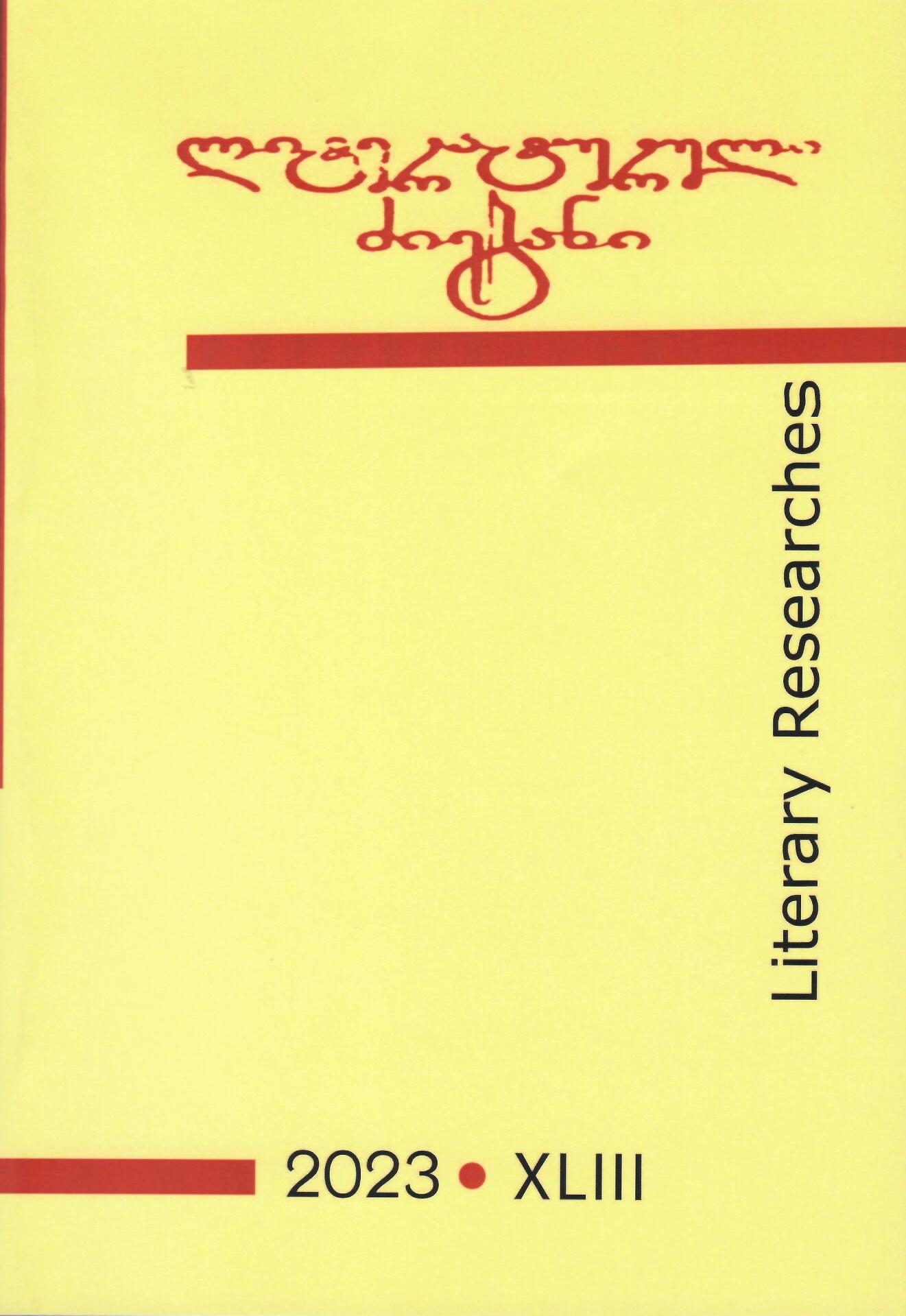Published 2023-12-14
Keywords
- Hymnography,
- Mark the Monk,
- George the Athonite,
- Lenten Triodion,
- Unknown Specimen
How to Cite
Abstract
Among 9th-century Byzantine hymnographers, there is one relatively lesser-known author who is referred to as Markos Sabbaite, Markos from Otranto or Markos the Monk in scholarly literature.
Markos the Monk is most known for the hymn intended for Holy Saturday, which he attached to the hymn of the outstanding hymnographer – Kosmas of Jerusalem.
The study of Georgian manuscripts, particularly Lenten Triodion under George the Athonite’s redaction, has revealed a hitherto unknown hymn composed by this author – a hymnographic canon, which is intended for the same day – Holy Saturday.
This unique collection attests the peculiarity characteristic of the work of its compiler, George the Athonite, who is extremely accurate in indicating the hymn writers and defining their texts. In a vast repertoire, in conditions of a large number of manuscripts and various testimonies, tremendous effort in identifying the authors lost over time is the most important peculiarity of George the Athonite’s activity.
In Lenten Triodion under George the Athonite’s redaction (Paris. Georg. 5) the author’s name Mark[o]z is written at the beginning of the hymn. A comparison with previous manuscripts revealed that this hymnographic canon of Markos the Monk was translated into Georgian for the first time by George the Athonite.
This hymnographic canon of Markos is an excellent example of ecclesiastical poetry. It is based on the “Gospel”, namely, the episodes depicting Great Sabbath not only in content, but also in phraseology. There are other biblical testimonies in the hymn. The odes of the hymn are characterized by refrains which are linked to biblical hymns attached to the psalms.
This hymnographic canon consists of 8 odes. From the point of view of the composition, the following circumstance deserves attention: the hymn contains two ninth-odes. The first of them begins with the dialogue between the Savior and the Mother of God standing near the crucifixion and continues with captivating of the hell.
No less impressive is the second version of the ninth ode of the canon, in which the deep theology characteristic of the author is clearly visible. Here, the symbolism of the tree is conveyed with great skill – the healing of Adam’s pole (i.e. the tree) punished by “vision of the taste of the wood” on the cross and understanding of the Savior as “a tree of life”.
At the beginning of the hymn, the relationship between the divine and human nature is discussed at the time of the crucifixion, when it was the mankind suffered the passion rather than the divine nature.
As it turns out, both in the canon of Great Saturday and in other hymn of the same day, the same hirmos is used by Markos the monk. In the canon, this hirmos is indicated only by the initial words, but in other hymn it is presented in full text, as in the first troparion of the hymn.
The scholarly literature on Markos the monk does not mention this hymn. This is a hitherto unknown work by this author.
It is interesting to mention that this hymn is not included even in the reductions of Greek and Slavic Lenten Triodions available today, where only certain sections of it (troparia) are found, included in the hymn of another author.
This hymnographic canon of Markos the Monk is not included in the modern Georgian Triodion, which exists after the reform carried out by Anton I. In modern Georgian Triodion on the occasion of the Great Shabbat, other hymnographic canon is presented.
Thus, this hymn represents an unknown specimen of Byzantine hymnography. In ancient Georgian manuscripts, in particular in Lenten Triodon under George the Athonite’s redaction, both its full text and a reference to the Greek author can be found.

